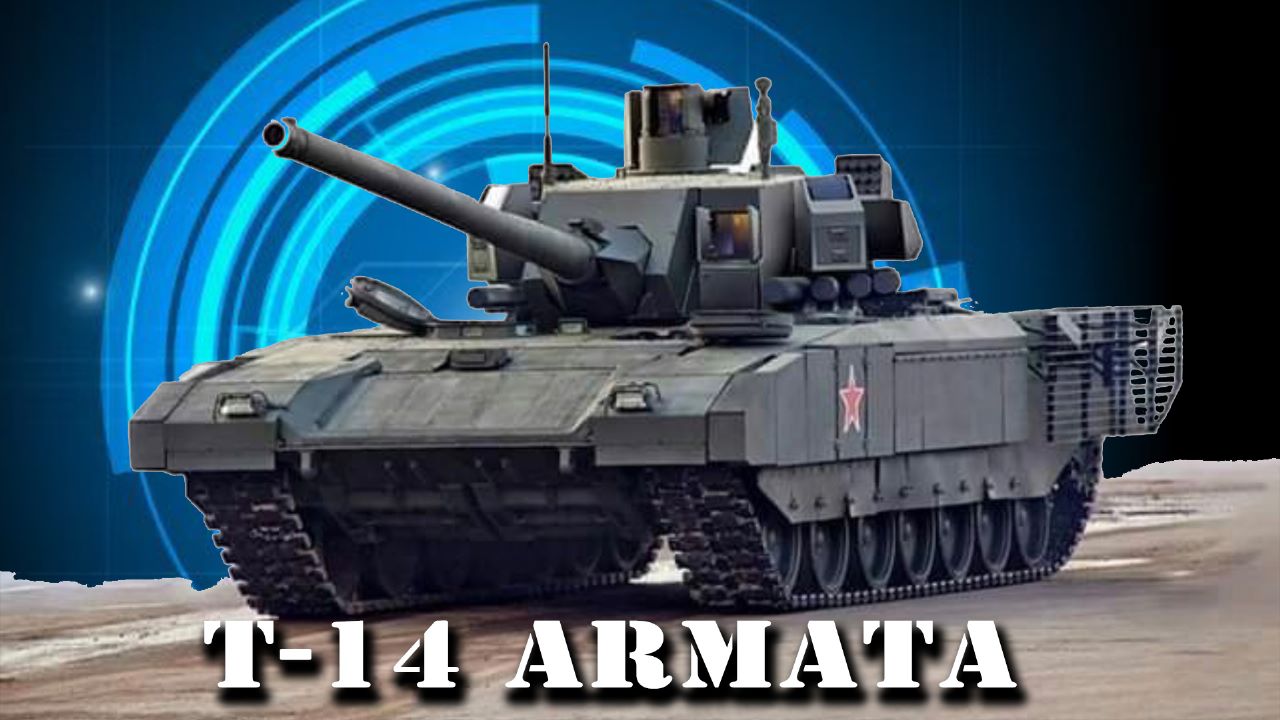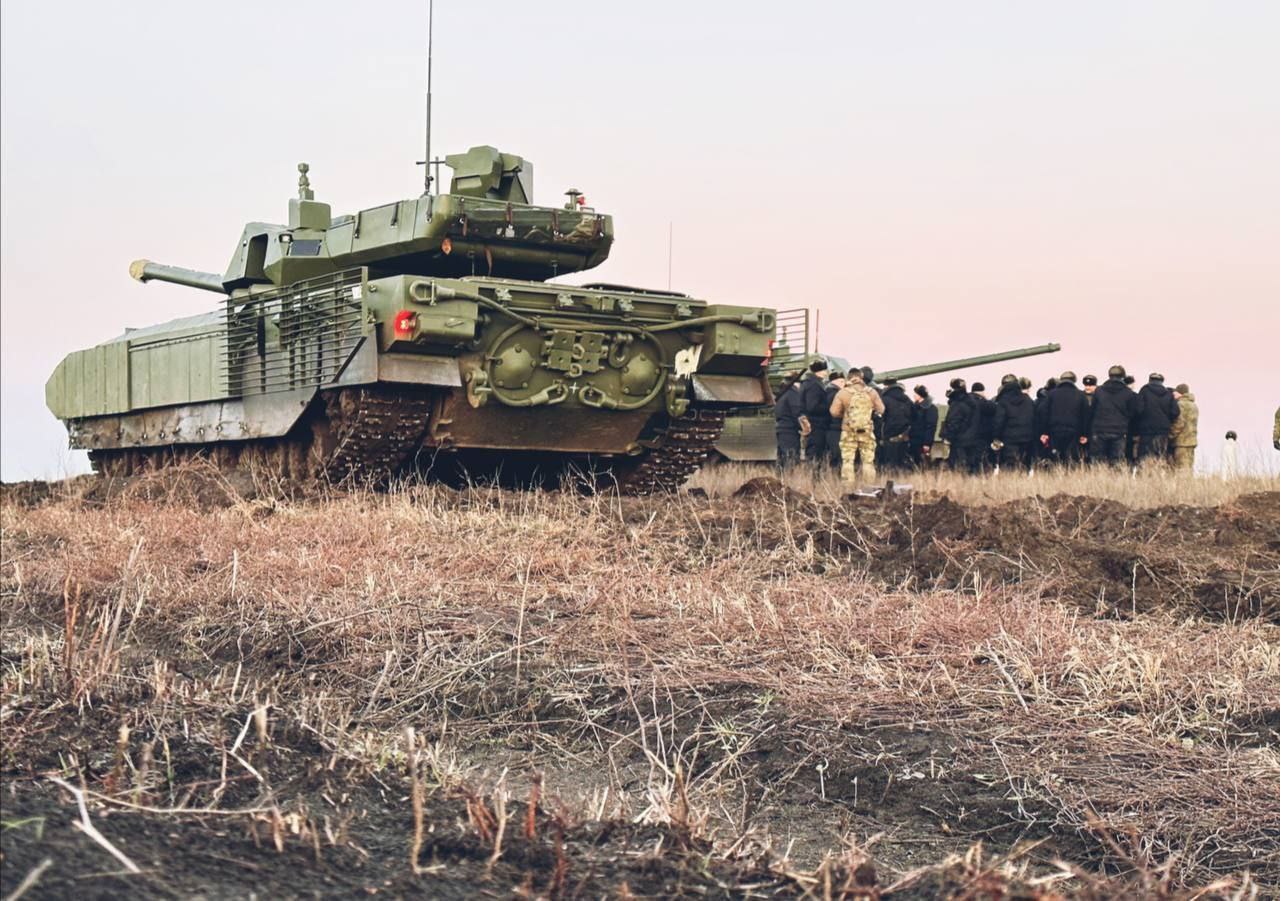Amid speculations about Russia’s possible use of its cutting-edge Armata tank, Director General of Rostec State Corporation Sergei Chemezov said that the T-14 Armata tank was unlikely to be used against Ukraine despite its operational advantages over other tanks in the Russian inventory.
The Director General said that the Armata was expensive, and while it was far more functional than the existing tanks in the combat zone, the Army was unlikely to press it into combat due to the high cost of production, RIA Novosti reported.
“It’s easier for them to buy the same T-90s,” Chemezov emphasized while adding that the state arms manufacturer needed funds to produce newer weapons. “Now we need money to create new tanks, new weapons, more, maybe cheaper. Therefore, if it is possible to buy cheaper ones, why not,” the Director General added.
The T-90 main battle tanks (MBTs) are the most advanced Russian tanks currently in the thick of combat against Ukraine, essentially the backbone of the Russian Army. The T-90s are frequently compared with more sophisticated Western tanks, including the Abrams, Challenger-2, and Leopard-2 MBTs.
Several of these tanks have been lost in combat and destroyed on the battlefield, while others have been captured by the Ukrainian troops after they were abandoned by their Russian crew.
According to a Dutch open-source intelligence site, Oryx, that collates equipment loss, Moscow has so far lost 66 T-90Ms, the most advanced variant of the tank available in limited numbers.

Since this data is based squarely on visual evidence, the actual number of T-90s lost in combat could be higher. Besides the T-90, Russia has lost hundreds if not thousands of Soviet-era and Russian-manufactured MBTs in Ukraine.
This is precisely why military watchers and war trackers have questioned why Russia does not deploy the T-14 Armata, a tank the country swears by. The T-14 Armata tank is the latest advancement in Russian tank production, using cutting-edge technology and potent armaments.
In January last year, British military intelligence alleged that Russian forces in Ukraine hesitated to receive the first batch of tanks due to their ‘poor state.’ The intelligence report also noted that any decision to deploy the T-14 tanks would probably be risky for Russia and mainly made for propaganda reasons.
By April of 2023, the Russian military began deploying T-14 Armata tanks in the ongoing “special military operation” in Ukraine. However, the T-14s were reportedly involved in combat with Ukrainian defensive positions in an unspecified area of the conflict zone but did not take part in direct attacks.
⚡️#BREAKING Russian T-14 Armata seen for the first time in action according to Voenkory pic.twitter.com/v4pnbIrcJZ
— War Monitor (@WarMonitors) February 9, 2023
Extra protection was added to the flanks of the Armata tanks stationed in Ukraine, indicating that Moscow was concerned about the likelihood of losing these advanced tanks. A military installation in the Donbas region of Ukraine has been the training ground for its operators since late 2022.
Just a few months later, in 2023, there were reports that Russia had effectively pulled out the T-14 Armata from Ukraine. The Russian military purportedly deployed the tank to test their operational performance in real combat situations so that the platform could be modified after a thorough combat assessment.
Despite claims and counterclaims regarding the combat debut of the tank, Ukrainian officials said they had not come across the T-14 Armata tank and wrote off the reports as mere propaganda. When asked about the tank, Gen. Kyrylo Budanov, chief of Ukrainian defense intelligence, said, “We haven’t seen a single instance of this machine being used. Not a single time to date.”
Although Rostec Director General’s recent comments make it abundantly clear that the cost of the machine is the reason behind the hesitation in deploying it in Ukraine, military experts have noted that it was never used in combat, implying that there were problems with the design or manufacture of a weapon that was supposed to be a next-generation tank, more sophisticated than models like the Abrams and Leopard 2.
(2 of 6)
In late December 2022, imagery showed T-14s on a training area in southern Russia: the site has been associated with pre-deployment activity for the Ukraine operation. pic.twitter.com/YzUnQ0147p
— Ministry of Defence 🇬🇧 (@DefenceHQ) January 19, 2023
A British intelligence update noted earlier that the number of T-14 tanks produced is limited, and military commanders might not be entirely confident in the T-14’s ability to fight.
During its development, which went on for years, the program encountered several serious problems, such as manufacturing troubles, delays, and the reduction of the intended fleet.
Another school of thought prevalent among military analysts, however, suggests that Russia is prioritizing the protection of its most sophisticated military assets, opting to use them in strategic and tactical roles rather than risking their loss in direct combat. This thought makes sense, given that the military has incurred tremendous tank losses in the ongoing war.
Russia’s Cutting-Edge T-14 Armata Tank
The T-14 Armata is equipped with numerous advanced features, positioning it as Russia’s answer to the American M1A3 Abrams, the British Challenger 2, and Germany’s Leopard 2 tank.
Unlike any of its predecessors, the new combat vehicle’s primary benefit is that it has an unmanned turret, and Its crew is also positioned inside an armored capsule that is sealed within the tank’s hull. This setup makes it possible to operate the weaponry remotely, which significantly increases the crew’s resilience in combat situations.
The T-14 Armata’s unmanned turret is equipped with a 125mm 2A82-1M smoothbore cannon with automatic loading. The turret has 45 rounds of ammunition, 32 of which are ready for use. The main gun can also fire laser-guided missiles with a range of seven to twelve kilometers.
The T-14 is protected by its Active Protection System (APS), which deflects and destroys approaching missiles. According to reports, the APS on the T-14 can stop all kinds of anti-tank missiles.

To defend against rocket-propelled anti-tank grenades (ATRPGs), the tank includes reactive armor in the front and bar armor in the rear. If needed, the tank can be modified with more active and passive armor.
The tank is also equipped with NBC (nuclear, biological, and chemical) defense, smoke grenade dischargers, and an automated fire suppression system. Additionally, it includes composite ceramic and steel-layered armor to fend against incoming threats.
To further enhance its efficacy on the battlefield, the T-14 Armata is equipped with a sensor-activated defense system that can identify and deploy interceptor charges to destroy anti-tank shells and missiles.
The Russian-built T-14 can function in temperatures as low as -50 degrees Celsius, according to a previous report by EurAsian Times. It is outfitted with mobile power stations that guarantee a rapid and smooth engine start even in freezing conditions.
A Russian military officer claimed that the T-14 Armata tank has a clear advantage over the Abrams and Leopard tanks due to its design and cross-country capabilities. The Hero of Russia, Major General Sergey Lipova, said in an interview that the Russian T-14 tank had several advantages over the Abrams, Leopard, and Challenger tanks made in the United States.
Lipova explained that the T-14 tank was designed differently from foreign tanks in terms of crew placement. While the crew in foreign tanks is evenly placed inside the hull, the T-14 has its crew housed in separate armored capsules.
If anti-tank weaponry strikes the tank, this special design element improves the crew’s chances of survival. He added that the T-14 tank was shipped to Ukraine for real-world combat testing. He further emphasized that since the Russian tank was lighter, it could move more easily across the battlefield, especially in marshy terrain.
- Contact the author at sakshi.tiwari9555 (at) gmail.com
- Follow EurAsian Times on Google News




